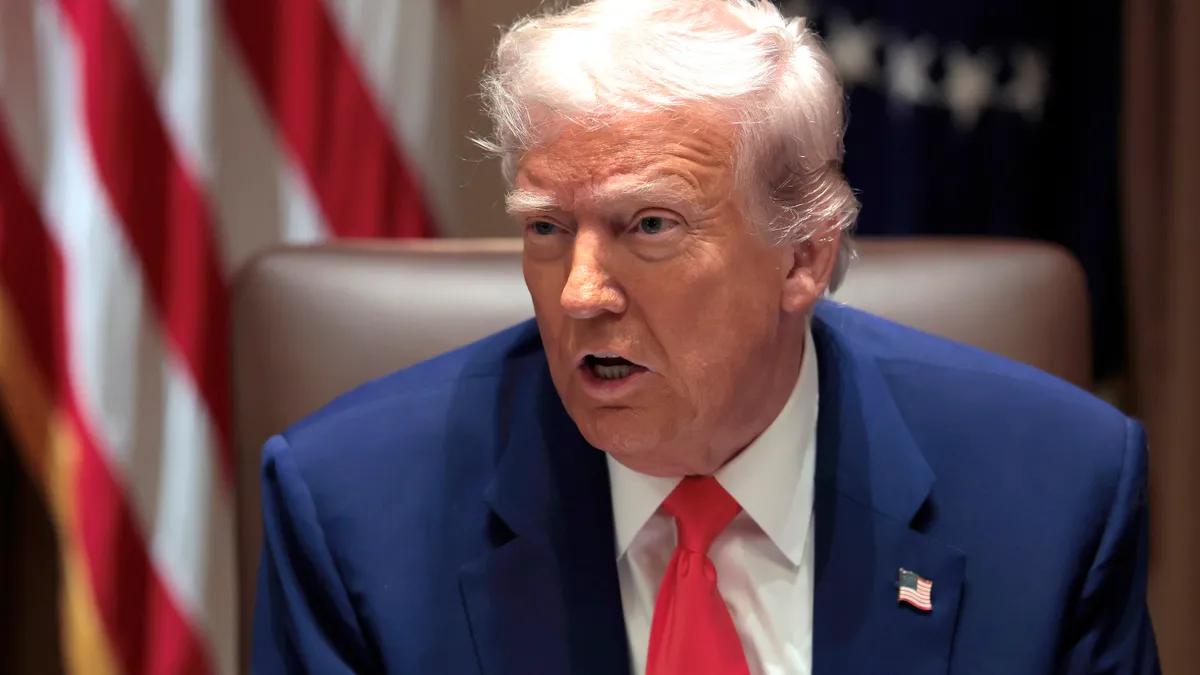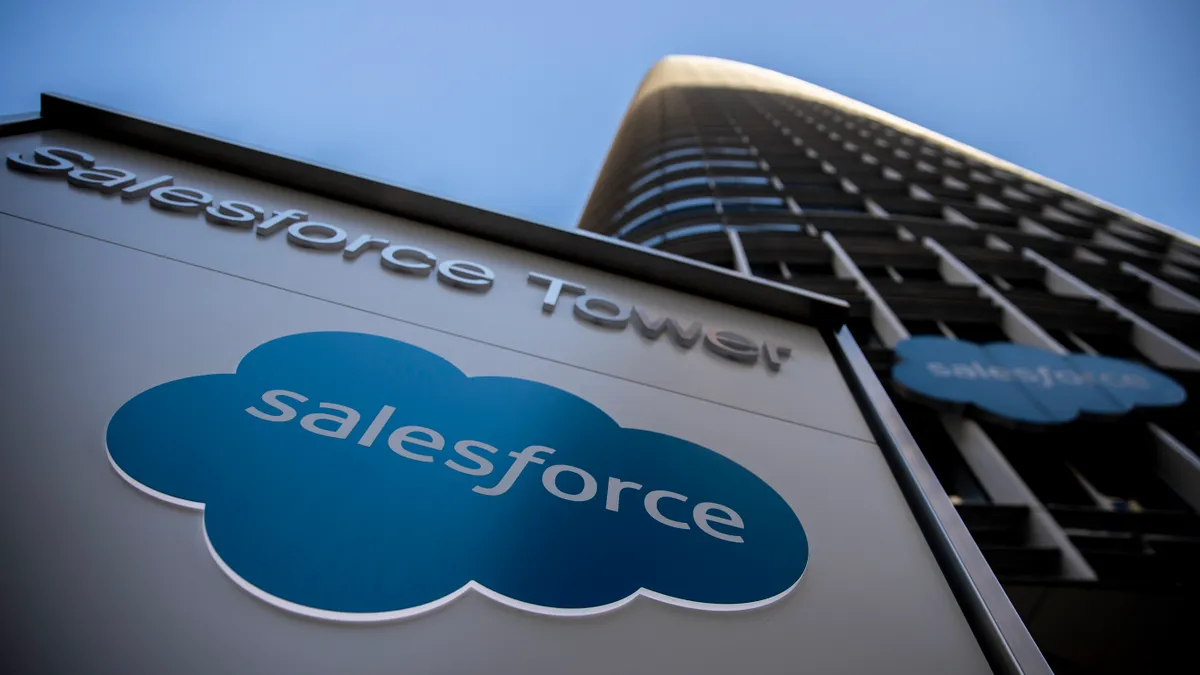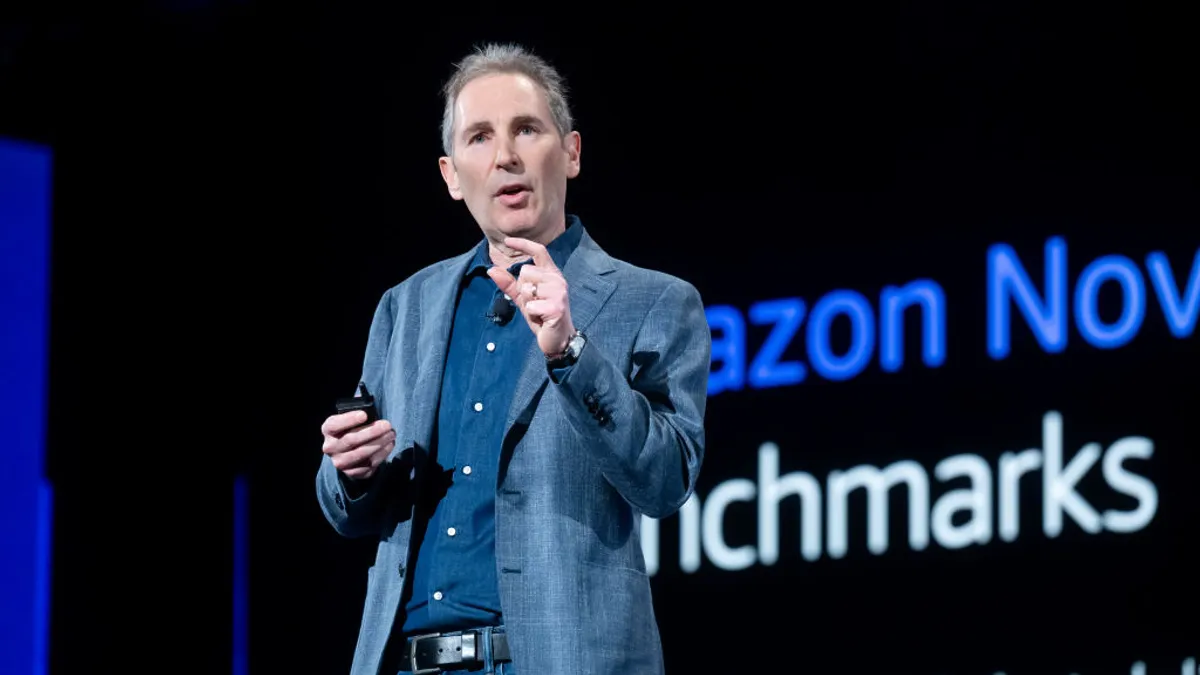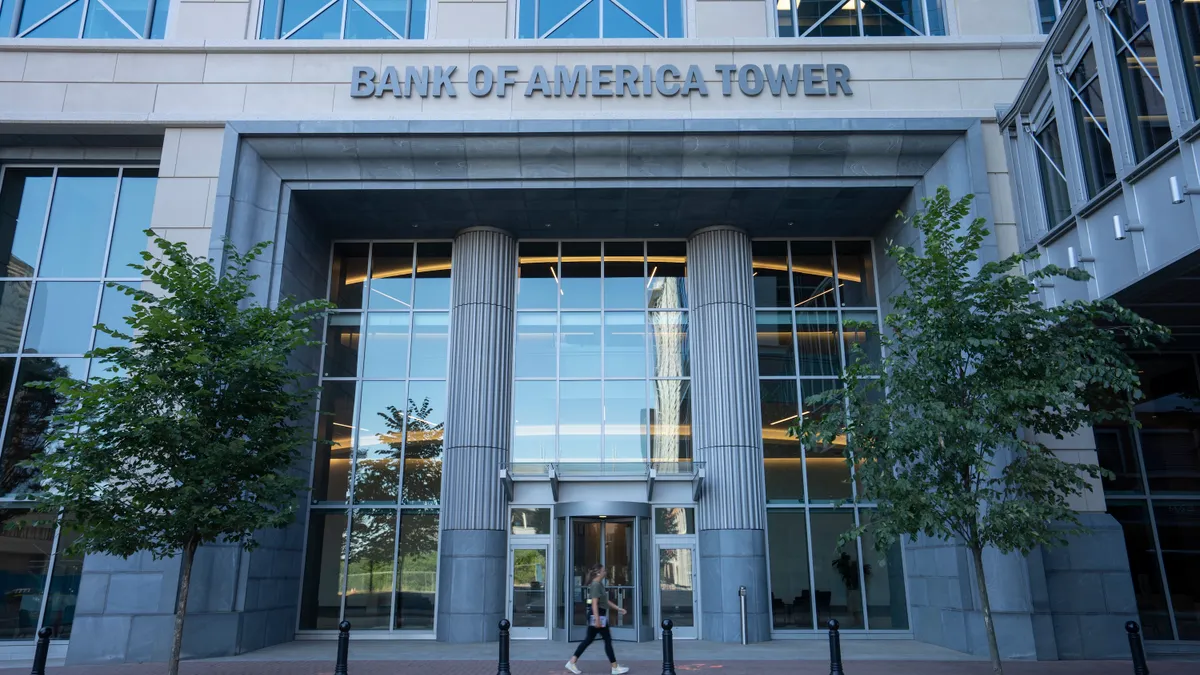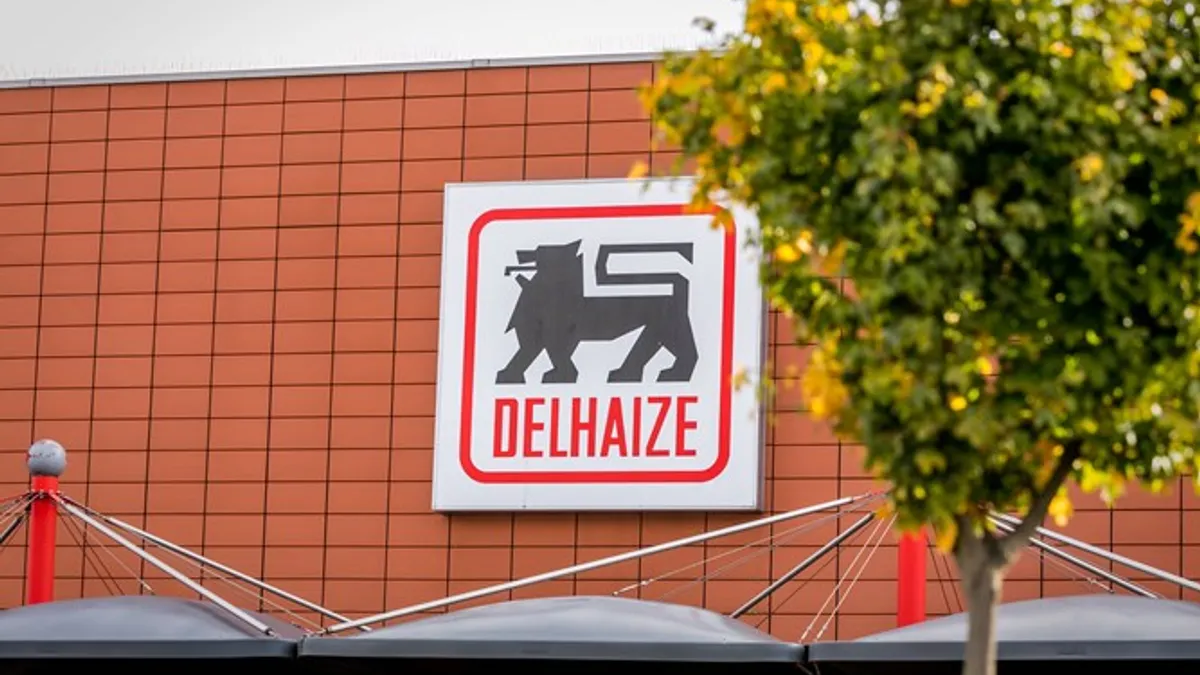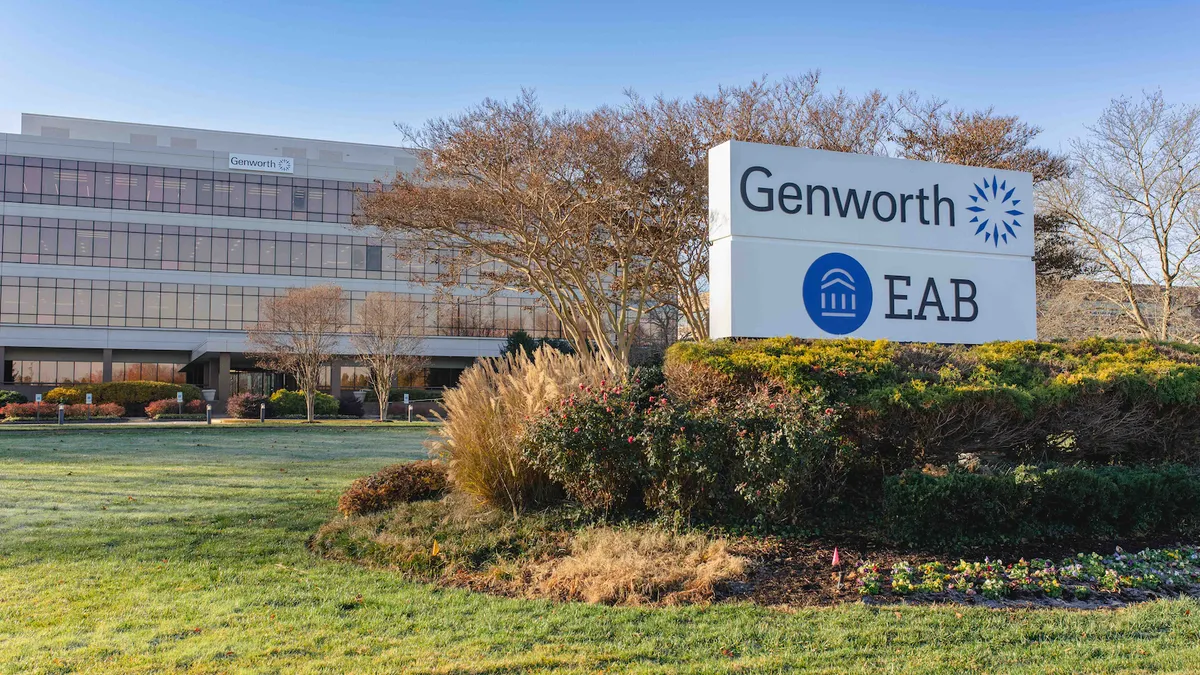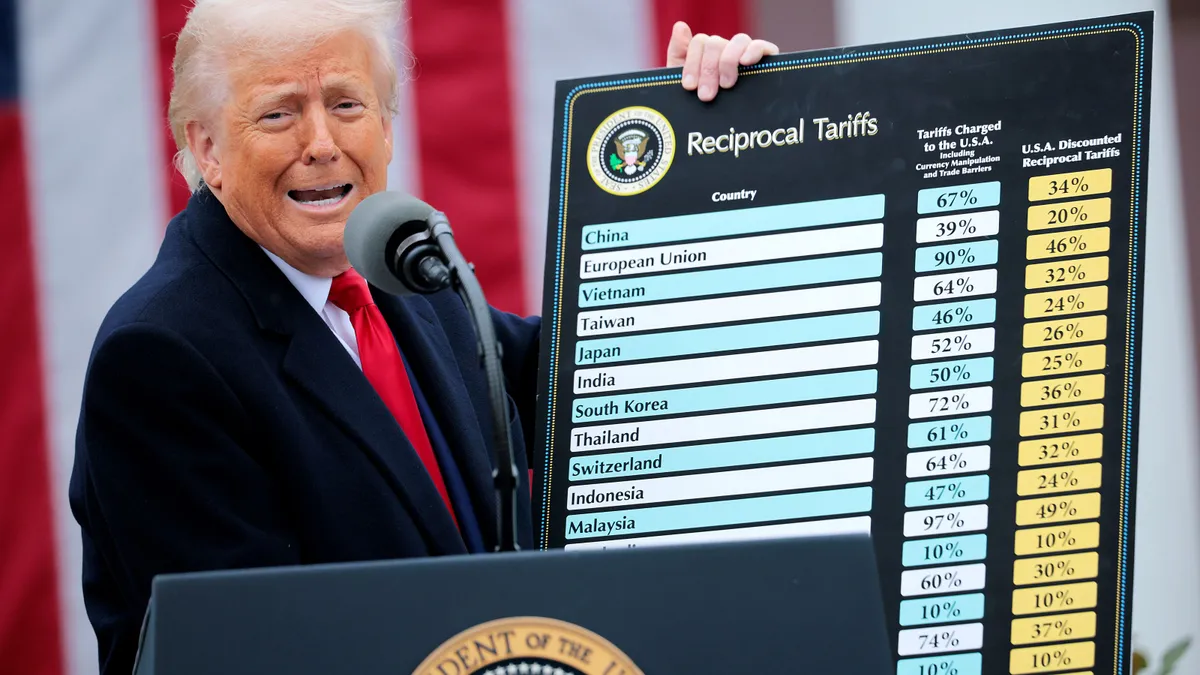Enterprises, markets and executives braced for an impending global trade war when President Donald Trump hit pause on a sweeping tariff regime set to take effect Wednesday.
While the 90-day reprieve on most country-specific reciprocal levies rallied Wall Street and gave organizations additional time to prepare, U.S. trade policy shifts during the first three months of the Trump administration have already impacted IT leaders and their plans for the year.
“We have seen a big increase in the number of companies that are telling us that their budgets are up in the air, that they still haven't finalized spending plans for the second half of the year, specifically because of uncertainty around tariffs,” Stephen Minton, program VP, customer insights and analysis at IDC, told CIO Dive Wednesday, hours before the pause was announced.
“The uncertainty level is already creating fertile ground for cutbacks,” Minton added.
Uncertainty doesn’t sit well in the C-suite. Unpredictable cloud bills and unreliable ROI are IT headaches technology executives could do without. The specter of a sharp rise in hardware costs coupled with supply chain disruptions and an economic slowdown has deeper implications for enterprise IT strategy. Executives can prepare by planning for a broad range of potential tariff scenarios.
“There will be a negative impact on spend this year even if the tariffs go away because the uncertainty factor has already started to influence spending decisions,” Minton said.
Prior to the announcement of the administration’s latest tariffs plan on April 2, IDC factored the economic impacts of uncertainty into its 2025 global IT spending forecast. The firm cut its projected year-over-year growth in tech spend to as low as 5%, from 10% at the start of the year.
“This is a moving target, but the risk of a global recession is higher than one week ago, with some economists now pegging it at 40%, and this uncertainty will have an immediate effect on business and consumer confidence,” Minton said in an April 4 blog post.
A 90-day pause on the tariffs plan should soften the immediate blow to the enterprise, Minton said via email Thursday. “It will definitely mean there’s less impact, but it won’t mean there’s no impact at all. Even if all the tariffs go away by the end of Q2, there will still have been an impact in the first half of the year,” he said, pointing to previously imposed Trump tariffs on imports from China and Canada.
“Businesses are going to have to go through this huge resetting and planning, which can be incredibly time consuming,” Minton said. “They’re expending a lot of resources while knowing that next week the tariffs could go away or get worse.”
Contingency planning
Tariffs are an inherently unpredictable instrument of trade and foreign policy. The duration, severity and ultimate consequences depend on the reactions and counterplays triggered by the initial threat and subsequent imposition.
For CIOs, that means building flexibility into IT planning and being ready to pivot.
“A key word to use here is volatility,” Mark Moccia, Forrester VP and research director, said via email Thursday. “It’s incredibly difficult for tech leaders to try and react to every new development so it’s wise to stick with disciplined scenario planning for readiness to adapt to wherever this all lands.”
Forrester previously warned that the tariffs plan announced April 2 — 10% across the board, 20% on EU goods and 34% on Chinese imports — would disrupt supply chains and trigger a spike in technology prices. The firm laid out four scenarios CIOs should consider in a Monday blog post:
- A pause or delay in the April 9 implementation date that would nonetheless call for IT spend scrutiny and project prioritization discussions.
- Tariff reductions as a middle-ground scenario in which CIOs should work with other enterprise executives to prioritize initiatives.
- A trade war characterized by retaliatory tariffs that may escalate and trigger a need for severe spend management strategies, ruthless project culling and deferral of hardware upgrades.
- The emergence of new sources for IT goods and services in countries willing to subsidize technology companies that can offer cheaper alternatives to established technology providers.
CIOs should hope for the best, plan for the worst and expect something in between the two to be the most likely scenario, Moccia said.
Contingency planning is also front and center in KPMG’s tariff playbook for CIOs.
“This is a period of economic uncertainty and CIOs have seen that before,” Todd Lohr, head of ecosystems, U.S. Advisory at KPMG, said on Wednesday from the Google Cloud Next conference in Las Vegas, where he’d just attended a session with roughly 100 CIOs.
“We're spending a lot of time, company by company, helping them think through the different scenarios because, even within the same industry, companies make different supply chain and sourcing decisions,” Lohr said.
IT’s job is to enable the business through economic booms, downturns and everything in between. As part of scenario planning, CIOs can deploy technology to navigate around supply chain constraints, perform real-time analytics and help inform and guide C-suite decisions.
“You might even think about bringing in AI to help think through some of the impacts of the tariffs,” he said.
Asymmetrical impacts
If the April 2 tariffs take effect in July, as planned, or in a different timeframe, the impact on technology prices and spending will vary across products and services, based on their country of origin and associated inputs.
The cost of devices, including laptops and mobile phones, will be affected most acutely and immediately, according to Forrester and IDC, followed by other compute, storage and network hardware.
Software, cloud and platform services have a longer runway before prices begin to climb, but when vendor costs increase, the bump eventually trickles down to customers.
Cloud will insulate many enterprises from infrastructure inflation, leaving hardware on the chopping block.
“The fastest way to save money is to deal with capital spending and equipment purchases — devices in particular — because businesses proportionally spend less on data center infrastructure these days,” Minton said.
PC shipments were up 4.9% year over year during the first three months of the year, as enterprises raced to get ahead of incoming tariffs and Microsoft's looming end-of-support cliff for Windows 10 devices in October, according to IDC research published Tuesday.
Organizations that kicked the can on a PC refresh may regret that decision.
“If you're about to embark on a Windows 11 push and you have to roll out thousands of devices that you've not yet procured, that's a problem,” Moccia said. However, CIOs wary of the security vulnerabilities associated with aging devices or hardware will want to prioritize high-risk areas while delaying enterprisewide procurements, he added.
Broader modernization investments may be delayed, as well, while businesses caught up in supply chain bottlenecks and retaliatory tariffs adjust.
“The economics of the larger organization affects IT budgeting,” said Lohr. If you’re a retailer planning to move your ERP to S/4HANA this year and all your clothes are made in a heavily tariffed country, that’s going to be difficult financially, he said.
IT services and consulting cuts are another area where CIOs can find short-term savings quickly. “It’s a fast way to protect the bottom line,” Minton said.
Workforce is a tougher call. Sourcing tech talent is a perennial pain point for CIOs, particularly in engineering, cybersecurity and AI-related roles.
“We always recommend pursuing every avenue humanly possible before you get into cutting labor,” Moccia said. “You don’t want to let 20 years of subject matter expertise walk out the door one week and find out they’re dropping the tariffs the next.”
As frequent policy changes contribute to a growing lack of clarity regarding tariff timelines, rates and countries impacted, CIOs should have several scenario plans in hand and be ready to pivot today, tomorrow or the next day.
“We're in April,” Moccia said. “You already have a budget and three months of spend under your belt this year and you’re about to start 2026 budget planning — that's really where the engine of chaos and creativity is going to play out over the next few weeks.”



